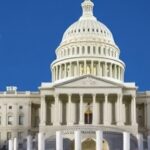In a surprising show of bipartisanship, President Donald Trump met with New York City Mayor Eric Adams on Tuesday to address the escalating Affordability crisis gripping the nation’s largest metropolis. The high-profile summit at City Hall highlighted urgent concerns over skyrocketing housing prices, surging food costs, and the broader cost of living that is pushing many residents to the brink.
- Trump’s Push for Federal Housing Incentives Targets New York’s Shortage
- Soaring Food Prices Squeeze New York Families’ Budgets
- Economic Relief Strategies Aim to Bolster New York’s Workforce
- Challenges and Criticisms Surround the Bipartisan Affordability Pact
- Future Pathways: Federal-City Collaboration to Ease New York’s Burden
The meeting comes at a critical juncture, as New York grapples with inflation rates exceeding the national average. According to the latest data from the U.S. Bureau of Labor Statistics, the consumer price index for urban areas in the Northeast, including New York, rose by 5.2% year-over-year in the third quarter, outpacing the country’s 4.1% increase. Trump, known for his tough stance on urban issues, emphasized the need for immediate federal intervention to ease the burden on working-class families.
“New York is the heartbeat of America, but right now, it’s beating too fast for too many people to keep up,” Trump declared during a press briefing following the closed-door discussions. Mayor Adams, a Democrat facing reelection pressures amid resident complaints, echoed the sentiment, stating, “This isn’t about politics; it’s about people. Affordability in New York is at a breaking point, and we need bold action from Washington.”
Trump’s Push for Federal Housing Incentives Targets New York’s Shortage
The core of the Affordability crisis in New York revolves around housing, where median home prices have surged to $750,000, up 15% from last year, according to Zillow’s latest market report. Rental costs are equally punishing, with the average one-bedroom apartment fetching $3,200 monthly—a figure that has jumped 20% since 2020, per data from StreetEasy. This housing crunch has led to a 30% increase in homelessness applications in the city over the past year, as reported by the New York City Department of Homeless Services.
During the meeting, Trump outlined plans to expand federal tax credits for developers building affordable units in high-density areas like New York. “We’re talking about billions in incentives to get shovels in the ground,” he said, referencing the Low-Income Housing Tax Credit program, which could see an additional $10 billion in funding if his administration’s proposal passes Congress. Mayor Adams proposed complementary city measures, including streamlining zoning laws to allow for more mixed-income developments in Brooklyn and Queens.
Experts hail this as a potential turning point. “Trump’s involvement could unlock federal resources that the city alone can’t muster,” noted urban policy analyst Dr. Elena Ramirez from Columbia University. “But success hinges on addressing regulatory hurdles that have stalled projects for years.” The discussion also touched on rent stabilization, with both leaders agreeing to explore caps on annual increases for low-income tenants, a move that could benefit over 1 million New Yorkers enrolled in subsidized programs.
To illustrate the scale of the issue, consider the following statistics:
- New York’s housing vacancy rate stands at a historic low of 3.4%, per the U.S. Census Bureau.
- Over 60,000 families are on waiting lists for public housing, according to the New York City Housing Authority.
- The cost of living index in Manhattan is 234% above the national average, as per the Council for Community and Economic Research.
These figures underscore why housing has become the flashpoint in New York’s affordability debate, with residents from all walks of life voicing frustration. A recent poll by Siena College Research Institute found that 72% of New Yorkers cite housing costs as their top concern, far surpassing other issues like public safety or education.
Soaring Food Prices Squeeze New York Families’ Budgets
Beyond housing, the meeting delved into the rising cost of living, particularly food prices, which have become a daily strain for many New Yorkers. Grocery costs in the city have climbed 8.5% in the past year, outstripping the national 6.2% hike, according to the USDA’s food price outlook. Staples like milk, bread, and fresh produce—essentials for the city’s diverse population—have seen particularly sharp increases, with eggs up 25% and ground beef rising 12%.
Trump highlighted supply chain disruptions exacerbated by global events, pledging to accelerate agricultural subsidies to stabilize prices. “Farmers are getting hit hard, and that’s passing straight to the dinner table in places like New York,” he remarked. Mayor Adams shared stories from constituents, including a single mother in the Bronx who spends 40% of her income on groceries. “We’re talking about families skipping meals or choosing between food and rent,” Adams said, advocating for expanded SNAP benefits tailored to urban food deserts.
The impact is stark in neighborhoods like Harlem and East New York, where access to affordable fresh food remains limited. A study by the Food Bank for New York City revealed that 1.2 million residents—about 14% of the population—face food insecurity, a number that has risen 25% since the pandemic. In response, the leaders discussed partnerships with local farmers’ markets to offer subsidies, potentially reducing costs by up to 30% for eligible shoppers.
Economists warn that without intervention, these trends could worsen. “Inflation in food is sticky, and New York’s reliance on imported goods makes it vulnerable,” explained Sarah Thompson, a senior economist at the Federal Reserve Bank of New York. The meeting’s focus on this issue signals a holistic approach to affordability, linking housing stability with nutritional access to prevent broader health crises.
Economic Relief Strategies Aim to Bolster New York’s Workforce
To provide immediate relief, Trump and Adams brainstormed economic measures targeting New York’s struggling residents. The city’s unemployment rate hovers at 4.8%, slightly above the national 4.1%, with underemployment affecting service workers in hospitality and retail—sectors hit hard by post-pandemic recovery challenges. The cost of living here demands an annual income of at least $100,000 for a family of four to live comfortably, yet the median household income is just $70,000, per U.S. Census data.
Key proposals included expanding child tax credits and offering one-time stipends for essential workers. Trump floated a federal jobs program focused on infrastructure projects in New York, estimating it could create 50,000 positions over the next two years. “We need to put money back in pockets and build for the future,” he asserted. Adams countered with city-specific initiatives, such as wage subsidies for small businesses in affordability hotspots like Staten Island and the Lower East Side.
Quotes from attendees painted a vivid picture. “This collaboration could be a game-changer for blue-collar New Yorkers,” said union leader Maria Gonzalez of the AFL-CIO’s New York chapter. Community advocates, however, urged caution. “Relief is vital, but it must be equitable—prioritizing immigrants and minorities who bear the brunt,” noted Rev. Al Sharpton, who joined the post-meeting panel.
Breaking down the proposed relief:
- Tax Breaks: Enhanced deductions for commuters facing high transit costs, potentially saving riders $500 annually.
- Utility Assistance: Federal grants to cap energy bills, addressing a 10% rise in heating costs this winter.
- Small Business Loans: Low-interest funding to help mom-and-pop shops absorb price hikes and retain staff.
These steps aim to inject stability into the economy, fostering long-term growth amid New York’s unique challenges as a global hub.
Challenges and Criticisms Surround the Bipartisan Affordability Pact
While the Trump-Adams meeting garnered praise for its urgency, it wasn’t without hurdles. Critics from progressive circles questioned Trump’s track record on urban aid, pointing to past budget cuts in social programs. “Affordability can’t be a photo-op; it needs sustained commitment,” argued City Council Speaker Adrienne Adams (no relation to the mayor), who called for more details on implementation timelines.
Environmental groups raised concerns over housing incentives potentially encouraging overdevelopment without green standards. “New York’s affordability fix shouldn’t come at the expense of sustainability,” said Lena Rivera, executive director of the Sierra Club’s New York chapter. On the flip side, business leaders applauded the focus on deregulation, with the Real Estate Board of New York estimating that streamlined approvals could add 20,000 affordable units by 2025.
The political landscape adds complexity. With midterm elections looming, Trump’s outreach to Democratic strongholds like New York could reshape voter dynamics. Polling from Quinnipiac University shows 55% of independents in the city view affordability as a bipartisan priority, suggesting broad support if promises materialize.
Addressing these critiques, both leaders committed to transparency, promising quarterly progress reports. This accountability measure could build trust, especially as New York’s cost of living continues to climb, with projections from Moody’s Analytics forecasting another 4% increase in 2024.
Future Pathways: Federal-City Collaboration to Ease New York’s Burden
Looking forward, the Trump-Adams alliance sets the stage for multi-level action on affordability. Upcoming joint task forces will prioritize pilot programs, such as subsidized housing lotteries in underserved areas and food voucher expansions via partnerships with chains like Whole Foods. Federal funding requests are slated for submission to Congress next month, potentially unlocking $5 billion for New York-specific initiatives.
Mayor Adams envisions a “New York Affordability Blueprint,” integrating housing reforms with workforce training to boost incomes. Trump, meanwhile, teased broader national policies that could ripple to other cities, like Chicago and Los Angeles, facing similar woes. “If we fix New York, we fix America,” he proclaimed.
Stakeholders remain optimistic yet vigilant. “The real test is delivery—turning words into walls, meals, and paychecks,” said economist Dr. Ramirez. As winter approaches, with its added strains on heating and holiday expenses, the eyes of New York’s 8.5 million residents are on this evolving partnership. Success here could serve as a model for tackling urban affordability nationwide, offering hope amid economic uncertainty.









